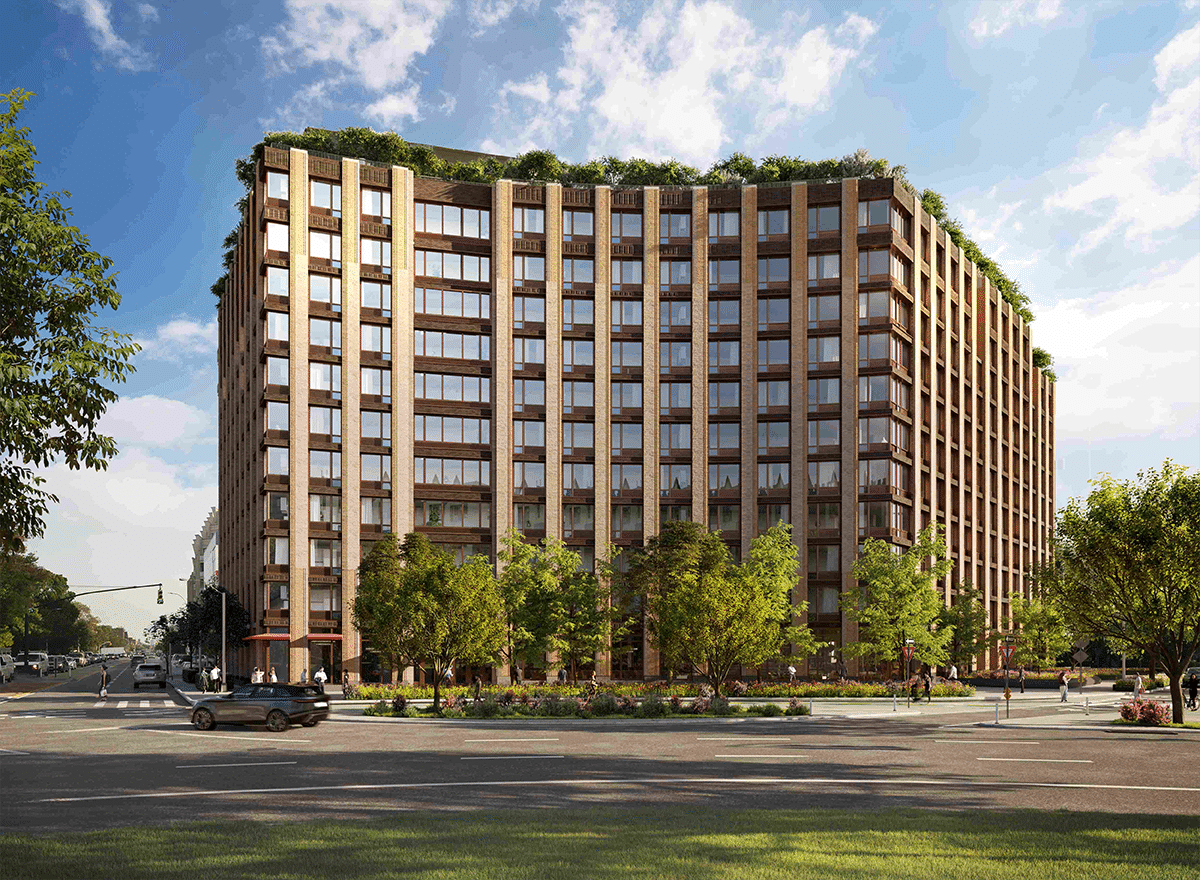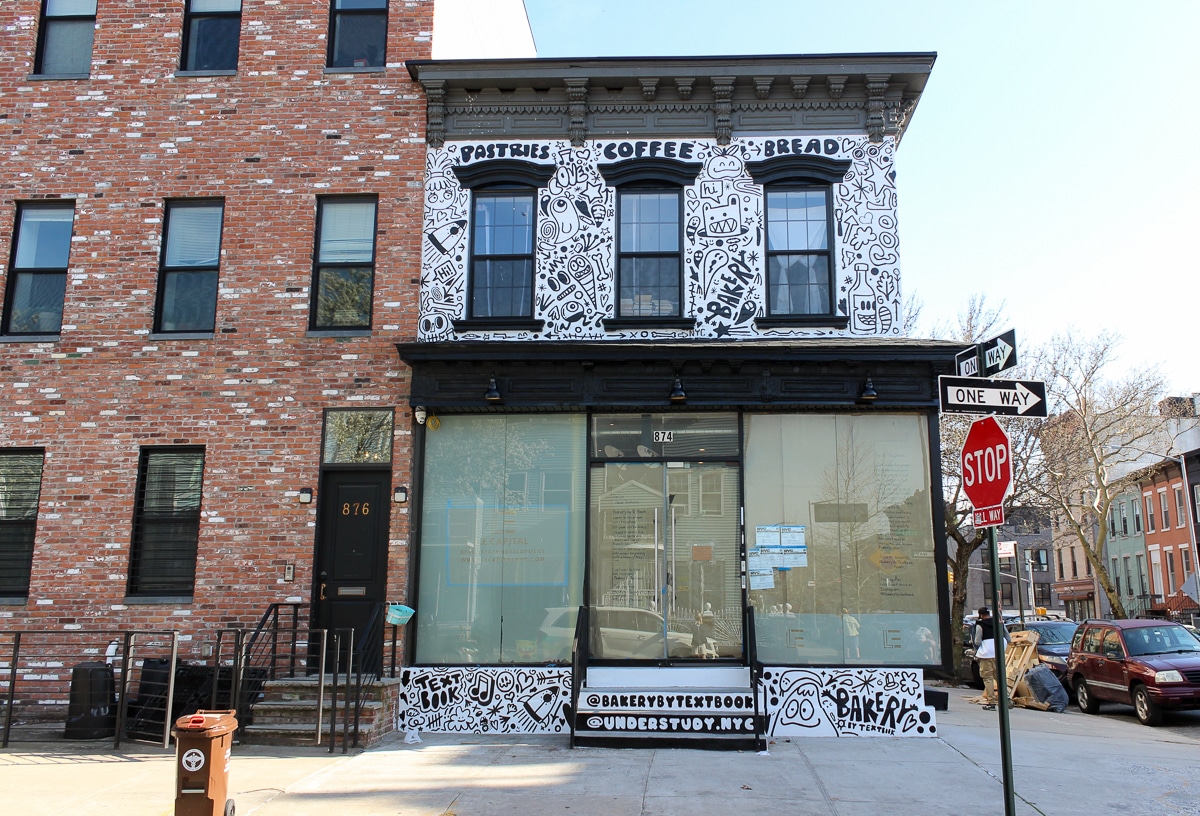Walkabout: The Germania Club
Brooklyn has always been a city of immigrants, from the first Dutch settlers to the people still coming here from every corner of the world. The first German settlers came to the New York City area soon after the Dutch, in the 1600’s, and their numbers increased over the centuries, peaking in the mid 1800’s….

Brooklyn has always been a city of immigrants, from the first Dutch settlers to the people still coming here from every corner of the world. The first German settlers came to the New York City area soon after the Dutch, in the 1600’s, and their numbers increased over the centuries, peaking in the mid 1800’s. In the early 19th century, they settled in Manhattan, in the area called Kleindeutchland, which centered around Tompkins Square, including the Lower East Side, before moving uptown to the area called Yorkville, on the Upper East Side, beginning in the 1870’s. In Brooklyn, the German community settled mostly in the Bushwick/Williamsburg/Greenpoint areas, establishing a very successful community with businesses, churches, social clubs, and schools. By the end of the 19th century, German-Americans in Brooklyn were the most successful, most powerful, and wealthiest ethnic group in the city. The Germania Club was one of the largest physical embodiments of that success.
Germany in the mid-19th century was not a unified country, but a collection of states. Attempts at unification had resulted in great political unrest and a revolution in 1848, causing thousands to immigrate to escape political persecution, joining those coming for economic and religious freedom. Many of these people were highly educated doctors, lawyers, educators, editors, musicians, and artists. Many were from Bavaria, Prussia, Baden, Hessen, Rhineland, Württemberg and Alsace-Lorraine, which is now part of France. For those who chose Brooklyn as their new home, the opportunities were there for the taking. Germans established breweries by the dozen, as well as other factories and businesses. They were butchers, craftsmen, tailors and teachers. John Roebling designed the Brooklyn Bridge. German-American architects, such as Theobald Engelhardt, Rudolf Daus, Benjamin Dreisler, William Ditmars and others built much of Williamsburg, Greenpoint and Bushwick, building factories, breweries, row houses, tenements, churches, hospitals, and schools.
They also built clubs and social gathering spots. German-Americans in Brooklyn founded Turn Vereins, German athletic and social clubs, precursors of the YMCA. They loved their singing clubs and societies, called sangerbunds, building halls such as the Arion, in Bushwick, and smaller, less famous clubs wherever there was a decent sized German population. And they built their beer gardens, some attached to the many breweries that were established, others associated with the Turn Vereins and sangerbunds. By the second half of the 19th century, many of Brooklyn’s most successful men had German backgrounds. They were active in politics, business, finance and trade. It seemed natural that a German-American club, in the grand tradition, would be needed to bring all of these movers and shakers together. The Germania Club fit that bill.
The Germania Club actually started in 1859. Their first clubhouse was on the corner of Atlantic Avenue and Clinton Street. Their hall hosted all kinds of events, such as lectures, concerts, balls, and meetings, as well as athletic events and games. The Brooklyn Eagle lists billiards tournaments, theatre and opera events, political rallies, and other such activities, taking place at this location. In 1888, the club had outgrown the space, and had enough wealthy patrons that they decided to build a new Germania Club, one that would make a statement as to what the German –American community could achieve, as well as meet their needs. They bought some property on Schermerhorn Street, near Smith Street, and began to make plans.
The Eagle summed it up well on October 30, 1888: “The Germania Club, an organization numbering among its members only the wealthiest and most exclusive of the Germans of this city, has purchased extensive property on Schermerhorn Street, near Smith. Upon the site will be erected a magnificent club house at a cost of $100,000. It is the intention of the Building Committee, of which ex-Mayor Frederick A. Schroeder is chairman, to have the new clubhouse the equal of any in this city.”
The Club had a competition for the design, which was won, not by one of the many excellent German architects in the area, but by prominent Brooklyn architect Frank Freeman. Freeman had just completed the magnificent Herman Behr mansion on Pierrepont Street, in Brooklyn Heights. Herman Behr was president of the Germania Club at the time, which never hurts, and probably sealed the deal. Freeman designed a massive and impressive Romanesque Revival behemoth of a clubhouse, a four story fortress of Gemeinschaft, 90 feet wide, made of light colored brick, terra-cotta and brownstone.
When the building was completed, in 1890, the Eagle called it “One of the finest specimens of Romanesque architecture in Brooklyn – a building that will hold its own in comparison with any other structure of the kind in America.”
The paper went on to describe the club, saying: “The upper story is a bewildering maze of gables, dormers, towers and minarets, crowned with a step roof of glistening tile and surrounded by bulging bay windows and odd but pretty balconies, which are formed by the benches of the deep set windows pierced through the outer wall. At each side of the building two tall ornamented chimneys stand like sentinels, lifting their heads above the apex of the tiled roof, and adding greatly to the beauty of the edifice.”
The interior was equally spectacular. The entrance opened up to a hallway leading to a wide staircase. The main reception room was 100×40, with a vaulted ceiling held by two rows of Corinthian columns. On this floor were a ladies’ reception room, reading rooms and a library, as well as servant’s apartments. The mezzanine floor held another large reading room, private rooms for dinner parties, cloak rooms and a café. The second floor was taken up by the grand dining hall. The Eagle wrote, “with paneled wainscoting of white oak and a high vaulted ceiling with groined arches.” It could seat 600 people. Another mezzanine floor held offices, dressing rooms and bathrooms. The third floor: ladies’ parlors, waiting rooms and bathrooms, and a huge kitchen. The top floor housed the ballroom/theater, with an auditorium of 100×64, which could seat 1,000 people, including those in a horseshoe gallery that ran around all four walls. The stage was 60×28, and backstage held a green room and dressing rooms. Far below, in the basement, were bowling alleys, billiard rooms and other sports facilities.
After the club opened with great fanfare, they immediately began running ads in the paper advertising various spaces for rent. Over the years, a great many political rallies and fundraisers were held here, as were balls and parties by many other clubs and organizations. The Germania Club became a popular city venue, hosting concerts, operas, lectures and even a yearly bid whist competition. The building was featured in postcards, and mentioned prominently in Brooklyn’s almanacs and year books.
However, this was not to last. By 1907, the Germania Club had sold the building to another club. It had cost them $130,000 to build, and the selling price was only $90K, a loss of 30%. Club membership had steeply declined, and the upkeep on this huge building was too much for them. Anti-German feeling as World War I loomed didn’t help either. Several members of the club were actively pro-Kaiser, causing others to quit in protest. By the 1920’s, the fate of the building was sealed, and the Germania Club was torn down, along with many other buildings on Schermerhorn Street, to build the new A/C subway lines beneath it. Today, the Central Court Building, built in 1932, sits on the site of the old club.











As impressive as the Central Court building is, this was much preferable. That is some building.
What about the Indians? Were they immigrants? Not to mention the Pakis.)
c